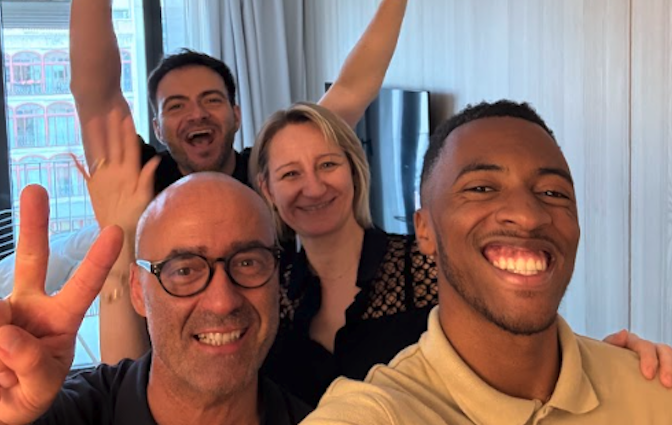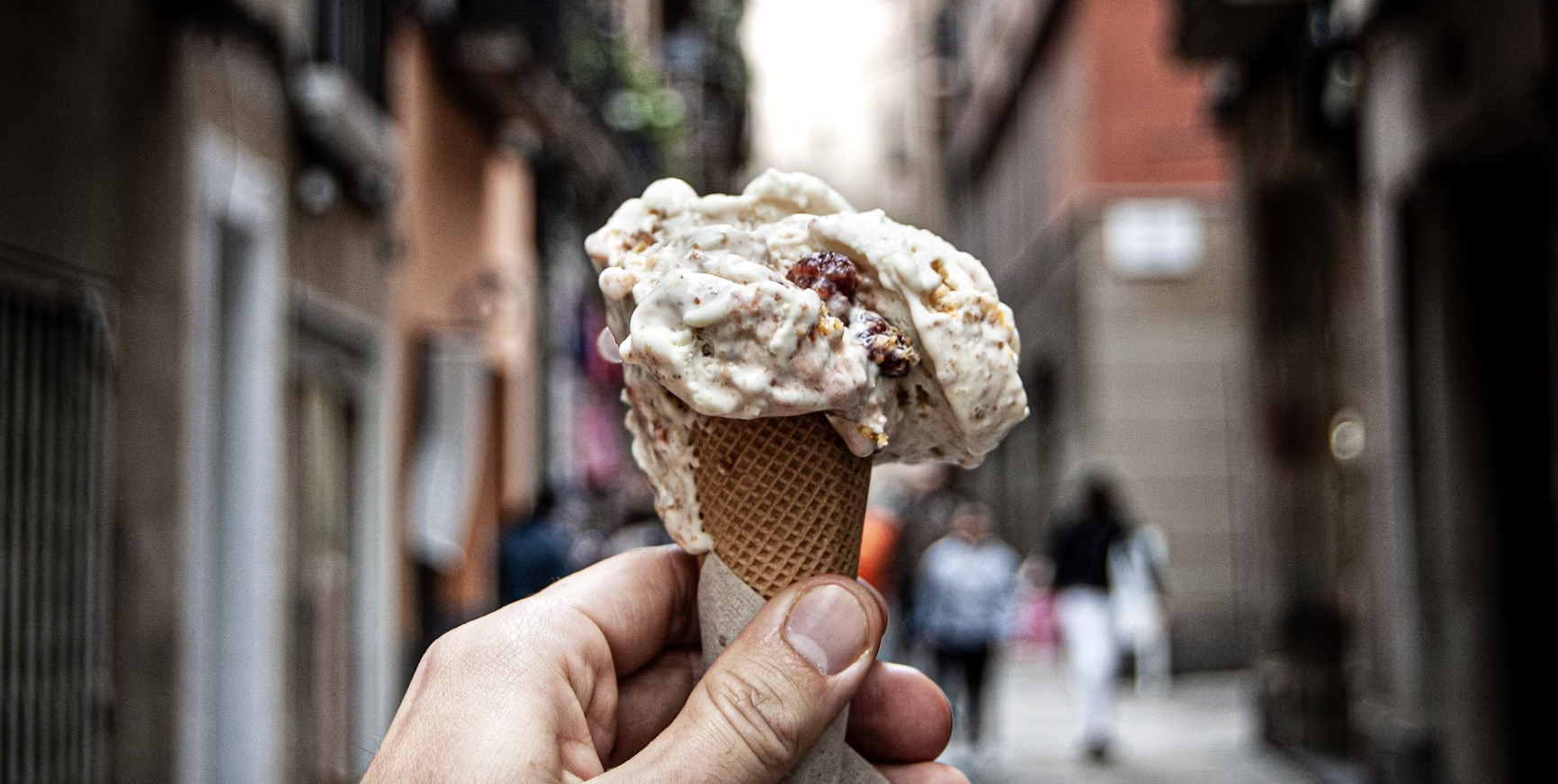Over the next few days, we will be publishing a student’s retelling of her stay with Barcelona SAE. Isabel Elliot is an undergraduate neuroscience major at Boston University and was a participant in our first 10-day January Term program called FOOD FIGHT: Constructing and Communicating Regional Identity in Spain and the EU with communications students from the University of Colorado Denver.
In her own words, here are the first of Isabel’s entries that will bring satisfaction to both travelers and foodies alike.
Day 1 – January 7th
Most of the first day involved getting settled in apartments and learning our neighborhood as well as a large tapas welcome dinner to introduce everyone to the variety of tapas available in Barcelona. Our extensive menu included:
- Pan con tomate—a simple but addictively delicious dish of bread with garlic, olive oil, and tomato.
- Escalivada—bread with a variety of grilled vegetables including eggplant, peppers and tomatoes. It also sometimes includes anchovies.
- Chorizo
- Jamon Serrano—jamon Serrano is everywhere in Spain. It is a dry cured ham and comes in many varieties that vary in intensity of taste, color, and price.
- Fideuá—fideuá is the Catalan equivalent of paella that is made with small noodles, called fideos, rather than rice. It is similar in seafood and meat content to paella and, in Catalunya, is served with garlic mayonnaise, or Allioli.
- Patatas Bravas—these are a very popular tapa in all of Spain that consists of potatoes with a few different sauces, generally Allioli and a tomato or red pepper sauce.
- Croquetas—another popular tapa that is a fried ball of sorts that generally consists of a béchamel like sauce and jamon Serrano. They also have fish or vegetables inside of them sometimes.
- Ensalada Rusa—literally translates to “Russian Salad” and is similar to American potato salad. It is made of potatoes in a mayonnaise sauce with vegetables and tuna (atún).
- Espinacas con garbanzos—a simple salad of sautéed spinach and garbanzo beans.
- Calamari alla Romana—anything that comes “alla Romana” simply means it is lightly fried, so this tapa was very similar to the idea of calamari that most Americans have. However, this calamari was much larger than the kind we get in the US and were more akin, size wise, to onion rings.
- Patatas Estrellada—this was another potato dish that literally translates into “crashed potatoes.” It has scrambled eggs and jamon Serrano on it.
- Crema Catalana—this a dessert that is almost identical to crème Brule and consists of a sweet egg custard with burnt sugar on top.
Day 2 – January 8th
The 2nd day we dove right in and got a more hands-on introduction to Spanish and Catalan food at the Mercado de Santa Catarina (The St. Catherine Market) near the center of town. Before big supermarkets, a specific market served each neighborhood of Barcelona. The more well-known market, La Boqueria, served the part of town surrounding Las Ramblas, a popular walking mall. Markets are still heavily utilized for everyday groceries in Barcelona and are a wonderful place to do all sorts of meat, fish, and cheese shopping.
While in the market, we tried a few of the local delicacies. First we tried prawns. Being from the United States, I’m not very accustomed to seeing prawns with their heads still attached and I’ve never sucked a prawn head. It was quite the experience. Most of us enjoyed the prawns and noted how fresh they tasted especially because most of us are used to fish that has been frozen for travels from the coast.
Next, we tried boquerones, which are anchovies preserved in vinegar instead of the oil generally found in the canned version. While they were quite fishy, we all really liked them because they also tasted very fresh and not as intense as canned anchovies. I really liked them and want to find them in the states!
Following the boquerones, we had two types of cheese. The first was a Manchego sheep milk cheese that is popular in the US and the quintessential Spanish cheese; the other was a dense goat milk cheese. They were both very good and very different. They were especially tasty with the jamon Serrano we got, which most of us were pretty familiar with from the tapas dinner last night. We also had sausage, or butifara, which tasted like most of the sausage that we’re used to in the US but, when it’s for dinner, it’s usually served with white beans.
Another food we tried in the market was two types of olives. One was a green and more plump olive while the other was called “griego meurto (dead greek)” because of its shriveled appearance. The market was a great introduction to where and how people in Barcelona shop, which is quite different than how we do it in the US.
After the market tour, I went to La Sagrada Familia. La Sagrada Familia has been under construction for over 100 years and was designed by Antoni Gaudí. Construction began in 1882. It is a huge basilica and a major landmark in Barcelona. Fun fact: Cities can only have one cathedral, a title already taken by the Cathedral of Barcelona near Barrio Gotico, so all other cathedral-esque structures are called basilicas.
I didn’t want to buy the audio tour and I couldn’t go up in the towers, so I just walked around the basilica and through the museum. I also sat near the altar and wrote for a while. It’s a beautiful building with a lot of the characteristically Gaudí features. You can’t go into the chapel where Gaudí is buried but you can see it from above. I loved La Sagrada Familia. It was so beautiful and serene. I also just love Gaudí’s architecture in general.



